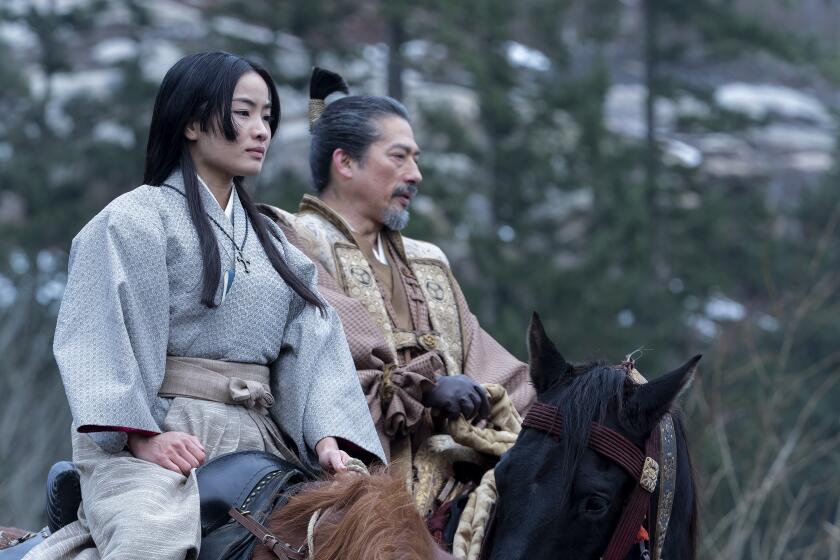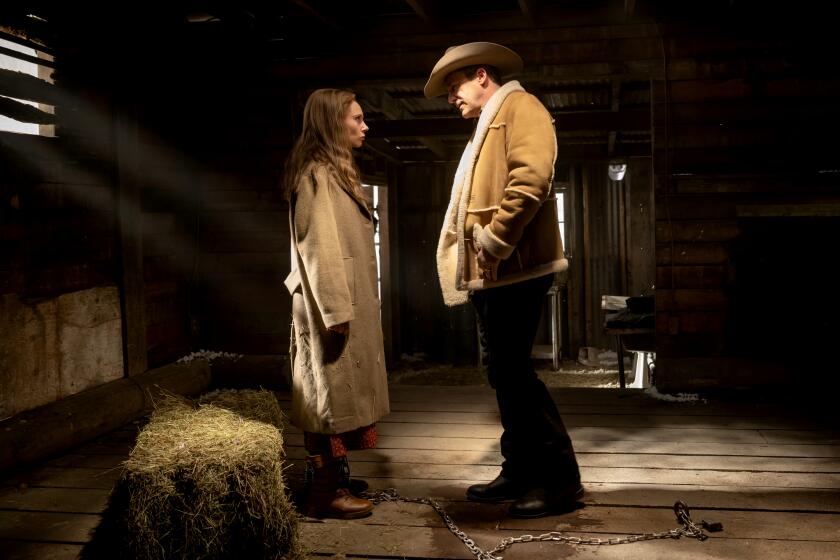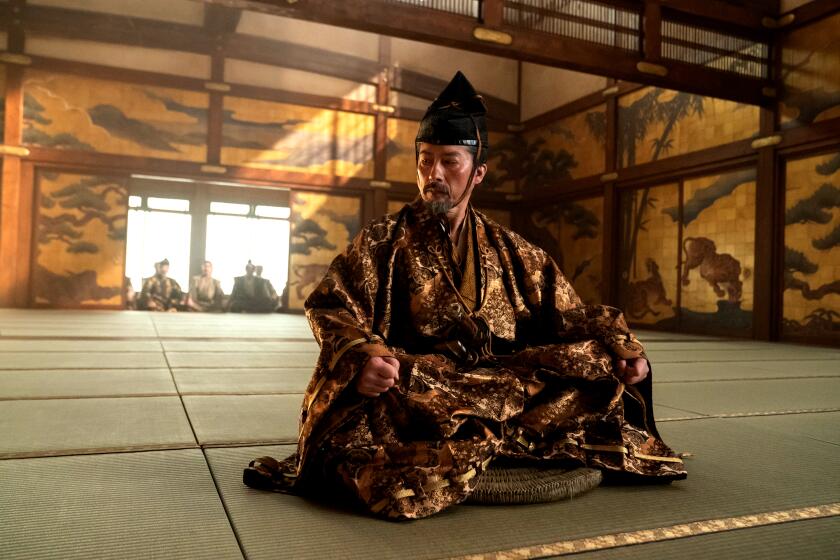Boisterous spectacle to intimate close-up, ‘Battle of the Sexes’ sounds like the real deal
Last year, sound design duo Ai-Ling Lee and Mildred Iatrou Morgan obsessed over the audio nuances of tap-dancing to craft their Oscar-nominated contributions to “La La Land.” This year, their handiwork opens the 1973-set “Battle of the Sexes,” immersing Emma Stone’s Billie Jean King, mid-match, in a flurry of pocks and thwacks. For the casual listener, it’s simply the sound of a tennis racket hitting a ball. But for Lee, the equipment had to be authentic.
“The type of wood racket players used in the early ’70s has a little more resonance and since the string is not as tight, you get a slightly different sound from present-day rackets,” says Lee, speaking by phone from a sound-mixing studio on the 20th Century Fox lot, where she’s working with Morgan on a new project.
To capture a period-perfect plonk sound, Lee tracked down vintage rackets on EBay, brought recording gear and her tennis-enthusiast husband to a broiling Los Angeles court, and went to work. Lee notes, “I didn’t want too much extra noises around us, so we picked the hottest time of the day to go there. I recorded serves, lobs, slices, different bounces, hitting the net, shoe squeaks.”
Video: Q&A’s from this season’s hottest contenders
Would audience members really notice the difference? “They may not be able to tell the difference right away, but the idea of sound design is that you want people to fall into the story and buy into the time period through how it looks and how it sounds.”
In a partnership that began in 2011 with “We Bought a Zoo,” the Singapore-born Lee handles sound effects with Foley supervisors while ADR specialist Morgan oversees dialogue and spoken word background noise. “Ai-Ling plays things for me, I play things for her, and we make all our decisions together,” Morgan explains. “It’s a fun process.”
For “Battle of the Sexes,” Morgan replaced the original 1973 commentary from tennis player Rosie Casals with freshly recorded dialogue performed by actress Natalie Morales. She can be seen on screen bantering, through CGI sleight-of-hand, with the late Howard Cosell.
Morgan also shaped the roar of the crowd during the iconic showdown of the title between King and former tennis pro Bobby Riggs by pulling audio from boxing matches, NFL games, concerts and a U.S. Open tennis tournament recorded by Lee with the digital recorder she carries everywhere. Iatrou says, “We wanted our version of the match to sound just like the original event, which started out more like a traditional tennis match with the kind of polite applause you might hear at a golf tournament.”
As the actual match heated up, audience members started screaming. Morgan meticulously transcribed shout-outs that can be heard on the televised broadcast. She says, “You had this real battle going on between the men and women in the stadium as well as the battle that was going on in the tennis court. Women cheered Billie Jean, men yelled encouragement for Bobby Riggs. We used what people in the crowd actually shouted at the time and re-recorded it in the studio with a group of actors yelling the same content.”
In contrast to that boisterous public spectacle, Lee and Morgan deployed more subtle sound cues to underscore the private romance blossoming earlier in the film between King and her hairdresser Marilyn Barnett (Andrea Riseborough). Intent on selling the intensity of that relationship, directors Valerie Faris and Jonathan Dayton turned the designers onto a phenomenon known as “Autonomous Sensory Meridian Response.” Lee recalls, “For the hair salon scene where Billie Jean and Marilyn meet for the first time, Jon told us about how ASMR stimuli can give you a tingling sensation that goes right down your spine.”
After watching YouTube videos devoted to ASMR triggers, Lee purchased an assortment of scissors and wigs. “I learned that it works best when you’re in a very quiet environment, so I recorded the snipping really close to the microphone in this very slow movement,” she says. “Then I slipped in some gentle close-up breathing, got the least annoying hair dryer I could find and put all of that into the mix.”
In its final sonic configuration, the characters’ initial meeting starts loud, then softens in the direction of that “tingling sensation” territory. Lee says, “The sound around Billie Jean and Marilyn melts away to the point where everything gets more dreamy. It feels like this very intimate close-up, just the two of them.”
See the most read stories this hour »
More to Read
From the Oscars to the Emmys.
Get the Envelope newsletter for exclusive awards season coverage, behind-the-scenes stories from the Envelope podcast and columnist Glenn Whipp’s must-read analysis.
You may occasionally receive promotional content from the Los Angeles Times.






